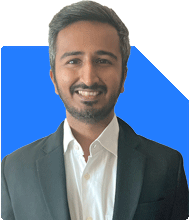I'm 55 and want to invest Rs 6 crores - is my plan good?
Vivek Lala | Answer |Ask -Follow
Tax, MF Expert - Answered on Jul 23, 2024
Lala cleared his chartered accountancy exam in 2018 and completed his articleship with Chaturvedi and Shah. ... more

Sir I have invested in Jeevan Shanti 2 CR for 9 years redemption deferred From 7th year I will get pension of Rs 2 lakhs approx every month My mutual fund investments is Rs 4 CR. I am 55 years old and I. Working Lete more about how to make more new investment
You may like to see similar questions and answers below
Ramalingam Kalirajan |9730 Answers |Ask -Follow
Mutual Funds, Financial Planning Expert - Answered on May 06, 2024
Ramalingam Kalirajan |9730 Answers |Ask -Follow
Mutual Funds, Financial Planning Expert - Answered on May 27, 2024
Ramalingam Kalirajan |9730 Answers |Ask -Follow
Mutual Funds, Financial Planning Expert - Answered on Nov 21, 2024
Ramalingam Kalirajan |9730 Answers |Ask -Follow
Mutual Funds, Financial Planning Expert - Answered on Jan 03, 2025
Nayagam P P |8808 Answers |Ask -Follow
Career Counsellor - Answered on Jul 15, 2025
Nayagam P P |8808 Answers |Ask -Follow
Career Counsellor - Answered on Jul 15, 2025
Nayagam P P |8808 Answers |Ask -Follow
Career Counsellor - Answered on Jul 15, 2025
Nayagam P P |8808 Answers |Ask -Follow
Career Counsellor - Answered on Jul 15, 2025
Nayagam P P |8808 Answers |Ask -Follow
Career Counsellor - Answered on Jul 15, 2025
Nayagam P P |8808 Answers |Ask -Follow
Career Counsellor - Answered on Jul 15, 2025
Dr Dipankar Dutta |1752 Answers |Ask -Follow
Tech Careers and Skill Development Expert - Answered on Jul 15, 2025
Dr Dipankar Dutta |1752 Answers |Ask -Follow
Tech Careers and Skill Development Expert - Answered on Jul 15, 2025
Dr Dipankar Dutta |1752 Answers |Ask -Follow
Tech Careers and Skill Development Expert - Answered on Jul 15, 2025
Dr Dipankar Dutta |1752 Answers |Ask -Follow
Tech Careers and Skill Development Expert - Answered on Jul 15, 2025




















